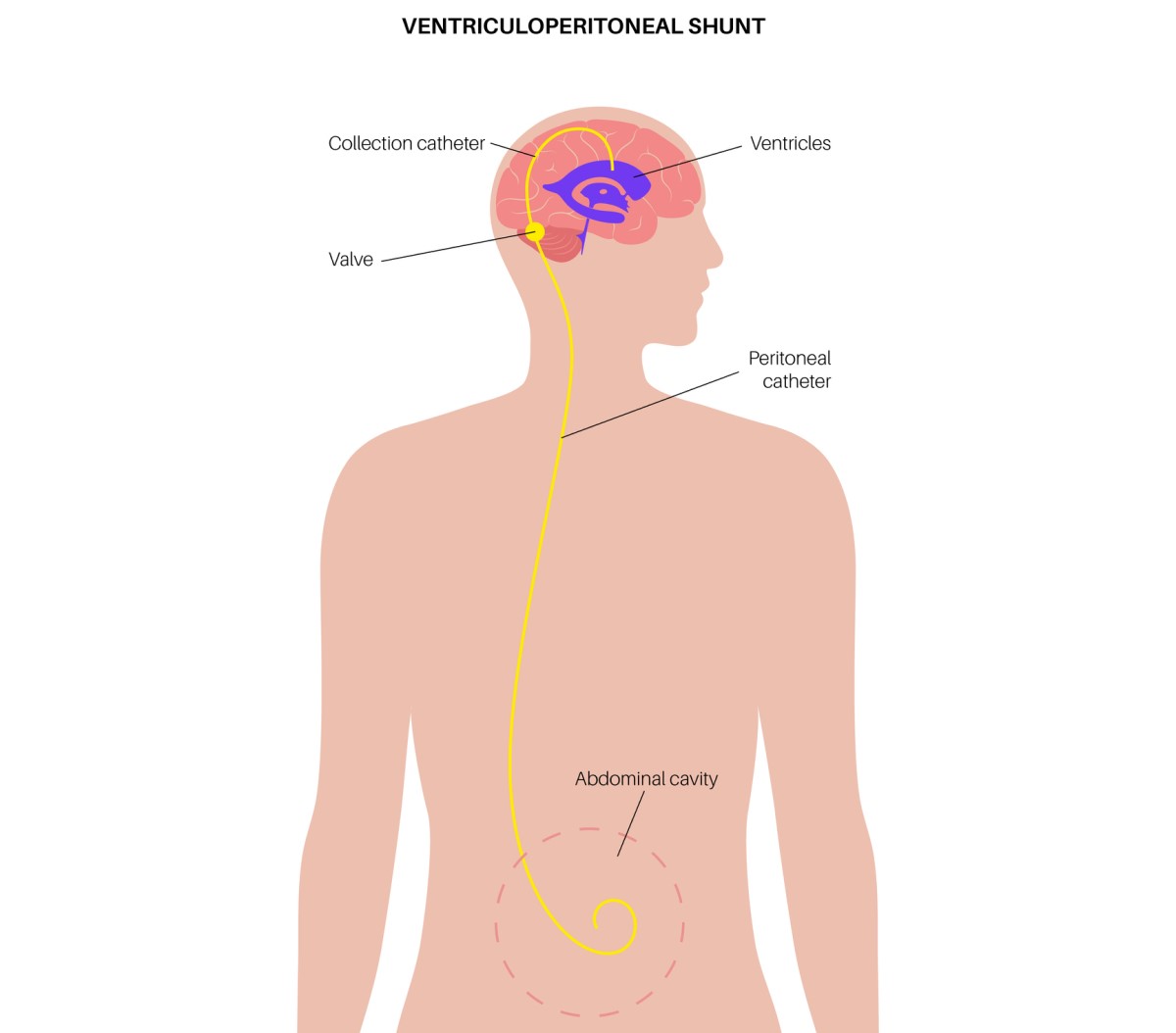Treatment of hydrocephalus: Medication? Surgery, drainage required
The principle of surgery is to remove the cause of hydrocephalus. If the cause of the obstruction is a tumour, the solution is to resect it, i.e. remove it.
If the cause of the liquor obstruction is unknown or located in an inoperable location, the solution is cerebrospinal fluid drainage. The liquor is drained from the lateral ventricles of the brain into another body cavity.
The drainage system (shunt) consists of a tube that has a ventricular and peripheral catheter and a valve. The valve is adjustable to different values of opening pressure.
Each valve also has a special gravity unit built in to prevent excessive drainage of large amounts of fluid when the patient is standing upright.
The peripheral catheter is inserted into a body cavity outside the skull. The most suitable body cavity for draining fluid is the abdominal cavity. The peritoneum, the lining of all the abdominal organs, is located here. It is a thin membrane that can absorb fluid.
If the abdominal cavity is not suitable for the placement of a drain, e.g. due to infection or recent abdominal surgery, the right ventricle can also be used.

In young children, drainage into the pleural cavity, the area covering the lungs, has also been described. However, this method is very rarely used.
The most serious complication of the drainage operation is infection. In case of infection, the entire drain must be pulled out, an external drainage system inserted, the patient treated with antibiotics and, once the infection is cured, the operation repeated with the insertion of a new shunt.
A modern method of treating hydrocephalus is endoscopic ventriculostomy. It is performed through a small trepanation hole made by a thin drill bit in the forehead and with the help of a camera system - an endoscope.
The principle is the creation of a small window at the base of the third ventricle. The creation of this communication ensures the outflow of fluid from the third ventricle into the pre-pontine cistern. This allows the free flow of fluid.
This procedure is indicated in cases of obstructive hydrocephalus with obstruction in the region of the aqueduct of Sylvius. A possible complication is more massive bleeding, e.g. from the basilar artery.
The endoscopic method can nowadays be used to operate on more pathological conditions in the intracranial space, e.g. brain cysts, intraventricular tumours, or it is possible to perform targeted tissue biopsies for the diagnosis of malignant tumours.










